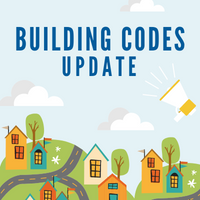 The building code update process in Virginia is underway this year. Workgroups have begun to meet to discuss proposals that have been submitted to DHCD for review. Below are several energy proposals that are currently under consideration by the DHCD energy subgroup committee, on which VAEEC executive director, Chelsea Harnish participates.
The building code update process in Virginia is underway this year. Workgroups have begun to meet to discuss proposals that have been submitted to DHCD for review. Below are several energy proposals that are currently under consideration by the DHCD energy subgroup committee, on which VAEEC executive director, Chelsea Harnish participates.
Note: You will need to register for a free account on the DHCD website to access the links below.
Proposals under consideration that the VAEEC supports:
EC-C407.6-21: Zero energy construction proposal to align all energy conservation codes with the 2021 IECC
REC-R402.1.2(1)-21: strikes VA amendments to fully adopt the 2021 IECC wall insulation requirements; this proposal was submitted by VAEEC member, Eric Lacey, of the Responsible Energy Codes Alliance (RECA). Using the DOE methodology for reviewing code change proposals, RECA determined that this proposal alone would improve efficiency a whopping 13%!
REC-R402.1.2(2)-21: strikes VA amendments to fully adopt the 2021 IECC wall insulation requirements; identical to the proposal above but submitted by a different patron.
REC-R402.4-21: strikes VA amendments to fully adopt the 2021 IECC air leakage requirements
REC-R402.4.1.2-21: requires 3ACH for air leakage but also provides a trade off for builders
REC-R403.3.3-21: updates air duct testing compliance to align with 2021 IECC
Additionally, the subgroup is also considering a proposal on electric vehicles:
REC-R404.2-21: Electric vehicles proposal to align residential energy code with the 2021 IECC
The Energy subgroup has taken positions on the following proposals, which were reviewed by the full working group on April 14th.
EC-C402.4-21: (Consensus) technical amendment to strikes Virginia amendment language currently in the Virginia Construction Code of the USBC that are either outdated or align with the 2021 IECC
EC1301.1.1.1-21: (Non-consensus) strikes Virginia amendments to fully adopt the 2021 IECC
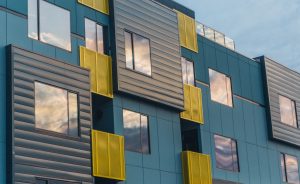 Virginia Uniform Statewide Building Code Updates
Virginia Uniform Statewide Building Code Updates
The Department of Housing and Community Development Board has finalized the latest update to the Uniform Statewide Building Code (USBC). This update puts us nearly inline with the 2018 model international energy conservation code (IECC). (The international model code comes out every three years with the 2021 update recently being finalized. More details on that below).
The latest update to the Virginia USBC includes some major energy improvements such as:
- Increased fenestration, which has been included in the model code since 2012
- Blower door testing requirements, which has been included in the model code since 2012
- Increased minimum ceiling insulation from R-38 to R-49, which has been included in the model code since 2012
- ResCheck compliance updated to 2018 IECC, without Virginia amendments. Previously, a work around had been created for VA amendments that weakened the current IECC.
- Energy certificate requirements, which has been included in the model code since 2006
These improvements, in addition to the expanded energy requirements we worked to incorporate into the last USBC update, bring Virginia nearly inline with the 2018 IECC. Along the east coast, only a handful of states have fully adopted the 2018 IECC, and only one southeastern state- Florida- has done so.
The remaining proposals from the 2018 IECC that are not included in the Virginia USBC are:
- Increased wall insulation R-value
- Changing building tightness from 5 ACH to 3 ACH
There is a 30-day comment period open on the Final USBC in the Virginia Register through March 31, 2021. DHCD anticipates an effective date of July 1st, and will begin the 2021 update once the 2018 update takes effect.
General Assembly Bill Update
The General Assembly also passed a bill in 2021 mandating a review of the most-updated IECC. While the original version of this bill mandated an automatic update to the latest IECC within one year, the final bill does not provide a timeline, nor does it expressly state that an automatic update is to occur. Instead, it requires the state to consider amendments that address the changes made in the model code. Since this is quite vague, it’s unclear how this will affect future update processes.
Updates at the International Level
The 2021 IECC was also finalized this fall after a massive appeals process. According to the DOE Office of Energy Efficiency and Renewable Energy, the energy requirements in the final model code will account for a whopping 19% in energy efficiency gains in the residential sector when implemented.
Key changes include:
- Envelope: fenestration and insulation increases
- Lighting: increased efficacy to promote LED use
- HVAC: duct leakage testing required in conditioned spaces, mechanical ventilation systems tested for flow rates, and ventilation fan efficacy increased
- Performance Path/ ERI: provides builders more flexibility to choose options that will work on specific projects based on their particular design, building type and location.
- Optional zero-energy compliance pathway: provides jurisdictions an opportunity to adopt a base or stretch code that achieves zero energy in homes and low-rise multifamily buildings.
More details about these changes can be found in this DOE Office of Energy Efficiency and Renewable Energy presentation.
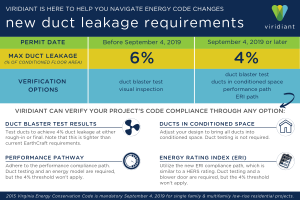 A lot of progress has been made on updating the Uniform Statewide Building Code (USBC) since our last blog post. First, the update that was finalized last year (the 2015 update for anyone who gets really into the weeds on this topic), went into effect earlier this month. Our friends over at Viridiant made a terrific infographic outlining the energy changes in that update and are hosting several compliance trainings across the state.
A lot of progress has been made on updating the Uniform Statewide Building Code (USBC) since our last blog post. First, the update that was finalized last year (the 2015 update for anyone who gets really into the weeds on this topic), went into effect earlier this month. Our friends over at Viridiant made a terrific infographic outlining the energy changes in that update and are hosting several compliance trainings across the state.
Over the summer, VAEEC and some of our members attended DHCD energy subgroup meetings to identify areas of consensus among stakeholders on the current update (the 2018 update for anyone who gets really into the weeds on this topic). You can read about all of the proposals discussed in the initial subgroup meeting in our last blog post on building codes.
We are pleased to announce that VAEEC and our members were able to successfully reach a compromise with the Homebuilders Association of Virginia, and other stakeholders, on several key proposals. The biggest gain is that blower door testing will now be required on all new homes that are constructed after this update goes into effect. Two smaller proposals also made it into the draft USBC- updating REScheck software and requiring a certificate on the electrical box that includes various energy details of the home. These proposals were voted on at the final workgroup meeting and went before the Board of Housing and Community Development who voted to include them in the draft USBC on September 16th.
While our insulation proposal was deferred until next year, we have an agreement with the homebuilders to do a couple of information sessions throughout Virginia with homebuilders to help them better understand what would be required with an increase in the insulation R-value. We hope to see some improvements to the insulation requirements in the final USBC.
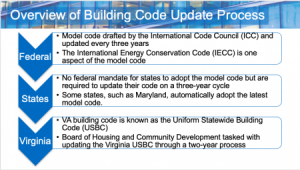 So, what’s next? We are waiting for the draft USBC to be placed in the Virginia Register, which will kick off a 30-day comment period. Then, next year, the entire process begins again as we move into the final phase of this update. The USBC update process is described in detail on our Building Codes page. We even have a handy graphic to explain it.
So, what’s next? We are waiting for the draft USBC to be placed in the Virginia Register, which will kick off a 30-day comment period. Then, next year, the entire process begins again as we move into the final phase of this update. The USBC update process is described in detail on our Building Codes page. We even have a handy graphic to explain it.
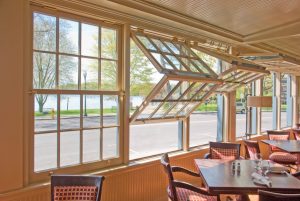 The update process to the Virginia Uniform Statewide Building Code (USBC) has begun*. This is a two year process, which will wrap up at the end of 2020. The Board of Housing and Community Development will hold a public hearing on July 22, 2019 and we encourage our members to attend in support of improvements to the energy code section of the USBC.
The update process to the Virginia Uniform Statewide Building Code (USBC) has begun*. This is a two year process, which will wrap up at the end of 2020. The Board of Housing and Community Development will hold a public hearing on July 22, 2019 and we encourage our members to attend in support of improvements to the energy code section of the USBC.
This spring, DHCD staff established smaller subgroups on key areas of interest, including energy, for the purpose of building consensus on some of the proposals already submitted. VAEEC and several of our members are participating in the energy subgroup, which has already met once. The following energy proposals, which would bring the USBC inline with the 2018 model code, have been reviewed by the subgroup:
- Energy codes for existing buildings (several proposals): ongoing discussion
- Ceiling and wall insulation: moving to workgroup for review as non-consensus
- Air leakage testing: ongoing discussion
- Commercial fenestration: ongoing discussion
- Replacement fenestration: moving to workgroup for review with consensus
- REScheck: ongoing discussion
- Certificate: ongoing discussion
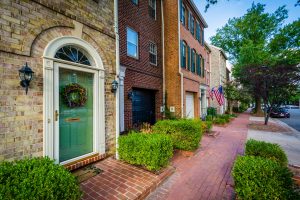
Regarding the existing building energy code proposals, the discussion centered around where the proposals should live within the USBC. Some code officials argued that they should live solely in the Existing Building (VEBC) section of the USBC, while other officials argued they should live in both the energy conservation codes and the VEBC. Another issue was that several proposals that attempted to strike existing building language from the energy conservation code actually weakened existing requirements. A small subset of subgroup members will work together to come up with a solution that works for everyone prior to the next subgroup meeting. As long as the existing energy code requirements remain intact, VAEEC does not have a position on which chapter is the right place for these proposals to live.
The proposal on insulation would have brought Virginia’s code up to the 2012 model code requirements. This proposal was opposed by the Homebuilders Association of Virginia, so it was marked as non-consensus. Their arguments were that it would “price someone out” of the market, that codes should be a minimum, and that there would be diminishing returns despite the proposal impact statement stating that this change would garner 6% in energy savings for homeowners, which is the greatest energy savings of any single proposal. We are disappointed that this proposal is moving forward as non-consensus, which effectively kills the proposal.
While we are pleased that the air leakage proposal did not suffer the same fate as the insulation proposal, the debate was just as spirited. VAEEC member Viridiant presented the initial findings from DOE Field Study they conducted in conjunction with another VAEEC member, Southeast Energy Efficiency Alliance, which highlighted that 25% of new homes being built to code are failing to meet the five air changes per hour requirement in the current USBC. If I could read the tea leaves, I think it might be possible for the blower door test to become part of the next USBC update, but the change from five air changes per hour to three will not move forward.
Next up were the two window fenestration proposals, which would bring the USBC up to the model code standard. While the window replacement proposal moved forward with consensus, the commercial proposal was concerning to the Apartment and Office Building Association (AOBA) due to implications for multi-family units. The AOBA official is taking the proposal back to his membership for review and will provide feedback at the next meeting.
The last two proposals were more administrative in nature. Because of some of the weakening amendments in Virginia’s code, Virginia builders, designers, and contractors cannot use the DOE REScheck software, to ensure code compliance on new construction, additions, or renovations. One of the proposals would remove language that refers Virginia builders, designers, and contractors to guidance documents DHCD has offered as an alternative. However, other proposals, such as the insulation and window fenestration proposals, would need to be approved as well. The other administrative proposal would require a permanent certificate within the structure, which would provide details on the thermal envelope, including insulation ratings and window U-values. VAEEC member Think Little explained that this would be extremely helpful in their work when they are working with a client to replace their HVAC system. Typically, they have to guess many of these data points, which could cause them to incorrectly size the new HVAC system. There was a lengthy discussion on where the certificate should be housed- particularly as it pertains to multi-family and commercial buildings. A smaller group of attendees are going to work out the details prior to the next subgroup meeting. This proposal should eventually move forward with consensus.
The subgroup will meet once more in early to mid summer to continue discussions on the remaining proposals and to determine if consensus can be reached on any of them before the proposals are reviewed by the workgroup. All workgroup activities will wrap up by the end of the summer. After that, all proposals will be reviewed by the DHCD Board who will then vote on all of the proposals that went through the workgroup process. All proposals approved by the DHCD Board will form the draft USBC, which will be reviewed and voted upon in the fall. The draft USBC will then go to the Virginia Register for a public comment period, and the process will begin all over again next year.
*You can visit the main building codes page on the VAEEC website to learn more about the development of the federal model code as well as the Virginia update process.
As mentioned at our Spring 2018 Meeting, the final Uniform Statewide Building Code (USBC) was published in the Virginia Register on April 30th. There is currently a 30-day public comment period open for any citizen who has concerns regarding these regulations.
If you have been following this process, then you will recall that VAEEC, in concert with our members and partners, was successfully able to work with home builders and code officials to include more energy efficiency measures in this new USBC update.
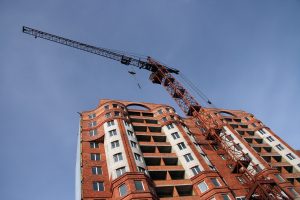
Initially, we anticipated the final regulations back in December with an effective date of July 1, 2018. Unfortunately, there was a major delay, which has now pushed the effective date to September 4th for the USBC and October 16th for the Fire Prevention Code. Earlier this week, we learned that this will most likely cause a delay for the next cycle update. It does not look like there is an appetite to start the next update cycle in 2019, as originally planned.
We will keep you posted as we learn more.
It’s been a while since our last blog post on the building codes update process and a lot has happened since then. In April, VAEEC and several of our members, participated in an energy stakeholder group to reach consensus with the homebuilders and code officials to incorporate some energy efficiency measures in the new draft Uniform Statewide Building Code (USBC).
These new energy efficiency requirements include removing the visual inspection for duct-testing and bringing duct-testing standards up to the current 2015 model code standard. According to a Department of Energy report, requiring mechanical testing for both air-duct tightness and building envelope tightness are significant opportunities for Virginia. According to the EPA, leaky ducts can reduce the performance efficiency of heating and cooling units by 20%. We are very pleased to see the inclusion of mechanical testing for duct leakage in the new USBC.
 A second component of the energy subgroup compromise proposal, includes adoption of the 2018 model code Energy Rating Index (ERI) compliance option rather than the 2015 version. This newer version gives homebuilders greater flexibility and trade-off options, which is important since homebuilders in states that have already adopted the 2015 model code, have been slow to use this pathway. By implementing the 2018 version, Virginia is making the ERI pathway more enticing, which will hopefully result in greater participation.
A second component of the energy subgroup compromise proposal, includes adoption of the 2018 model code Energy Rating Index (ERI) compliance option rather than the 2015 version. This newer version gives homebuilders greater flexibility and trade-off options, which is important since homebuilders in states that have already adopted the 2015 model code, have been slow to use this pathway. By implementing the 2018 version, Virginia is making the ERI pathway more enticing, which will hopefully result in greater participation.
The compromise proposal unanimously passed the Codes and Standards Committee of the Board of Housing and Community Development last month. This new proposal will be part of the new draft USBC that will be reviewed by the full board on October 16, 2017.
You can read more about our support for these proposals in our letter to the Department of Housing and Community Development (DHCD) during the public comment period earlier this year.
These new components are in addition to the energy efficiency measures that are already included in the draft USBC, which was published last December in the Virginia Register. These proposals include improvements on lighting requirements, hot water pipe insulation, and the creation of the 2015 ERI compliance option.
So where do we go from here?
According to the DHCD website, the timeline below lists the next steps to finalizing the new regulations:
- October 16, 2017: DHCD Board will review and vote on final USBC; final draft will be sent to the Governor’s office for review
- Late Fall 2017: Governor’s office and Office of the Attorney General review final draft
- December 2017/ January 2018: Final regulations printed in Virginia Register and 30 day comment period
- February/March 2018: New regulations take effect
Even though we have made good strides in advancing energy efficiency through the building codes, there is still more work to be done. VAEEC will continue to advocate for more efficient window and insulation requirements in future USBC updates, as well as mandating mechanical testing for building envelope air-tightness. Proper air-tightness helps consumers save money on their energy bills while maintaining a consistent comfort level throughout the home by reducing the potential for air leakage to the outside.
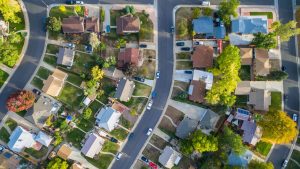 VAEEC partnered with one of our members, Responsible Energy Codes Alliance, to submit a proposal to DHCD staff to host a stakeholder group to review these issues next year, in the hopes that a compromise can be reached on inclusion of this crucial energy efficiency practice in the next USBC update. Last month, we were pleased to see the full DHCD board unanimously vote to support these efforts.
VAEEC partnered with one of our members, Responsible Energy Codes Alliance, to submit a proposal to DHCD staff to host a stakeholder group to review these issues next year, in the hopes that a compromise can be reached on inclusion of this crucial energy efficiency practice in the next USBC update. Last month, we were pleased to see the full DHCD board unanimously vote to support these efforts.
This workgroup will review the results from the DOE Field Study being conducted by VAEEC members Viridiant and the Southeast Energy Efficiency Alliance (SEEA) who will be collecting data in the field to determine what, if any, compliance issues could be addressed through training and education. You can read more about this study on SEEA’s website. The results of this study will greatly inform the workgroup’s ongoing discussions on the need to require mechanical testing for whole-home air tightness. The VAEEC is also working with other members to potentially host a training for the stakeholder group to demonstrate the tests themselves and how the results are interpreted.
You can read more about our recommendations for future building code updates here.
 Now that the General Assembly session has ended, the VAEEC has switched its attention to several of our other priority programs, including the building code update process currently taking place here in Virginia. Southeast Energy News just had a good summary of this process that quoted VAEEC Board member Andrew Grigsby extensively.
Now that the General Assembly session has ended, the VAEEC has switched its attention to several of our other priority programs, including the building code update process currently taking place here in Virginia. Southeast Energy News just had a good summary of this process that quoted VAEEC Board member Andrew Grigsby extensively.
There are myriad important ways for you to support strong building codes in Virginia.
Public Comment Period Now Open and Webinar Available for Support
The Department of Housing and Community Development (DHCD) recently opened a public comment period seeking comment on the current draft code regulations that will run through May 26 (an extension from the original deadline of April 21).
We will be holding a members-only webinar on Thursday, April 20 at 12pm that will include:
- Update on proposals we support
- Key messaging points to consider for your comments
- Overview of VAEEC’s draft comments
- Q&A and on-the-spot feedback
Comments can be submitted through the Commonwealth’s Town Hall website.
Support Proposals in Person
On April 11th, the stakeholder workgroup, which is open to anyone to participate, will be meeting to discuss all of the energy proposals currently being considered for inclusion in the code update. Any member of the public can attend and speak in support of proposals that are being presented. We encourage anyone who is interested in this topic to attend to show your support for the following proposals* to require:
*You need to register on the DHCD website to view these and other proposals that are currently being considered.
There will also be a public hearing at the May 15th Board of Housing and Community Development meeting. The meeting will begin at 10am. We strongly encourage anyone who wishes to attend this meeting to get there early as seating is very limited.
Board Nominations Open
Finally, as we mentioned in previous communications, there will be one open seat on the Board of Housing and Community Development. We are seeking candidates who have a strong building science background and who live in congressional district one, which runs from Poquoson to Manassas (check here to see if you live in this district). If you are interested in being on the board and qualify for this seat, please email me at Chelsea@vaeec.org with your resume. We will be submitting the name(s) of our potential candidates to the administration in late spring.
 On January 10, 2017, VAEEC and LEAP made the case for Virginia adopting the model energy codes for new buildings before the EO-57 Working Group. This is a group convened by Secretary of Natural Resources Molly Ward per Governor McAuliffe’s Executive Order 57 in the summer of 2016; the group is charged with recommending concrete steps to reduce carbon pollution from Virginia’s power plants using existing authority; a public comment period is open through April 30.
On January 10, 2017, VAEEC and LEAP made the case for Virginia adopting the model energy codes for new buildings before the EO-57 Working Group. This is a group convened by Secretary of Natural Resources Molly Ward per Governor McAuliffe’s Executive Order 57 in the summer of 2016; the group is charged with recommending concrete steps to reduce carbon pollution from Virginia’s power plants using existing authority; a public comment period is open through April 30.
You can download our full presentation here. Learn more about EO-57 and submit your comments here.
Our case was greatly strengthened by the fact that two of the day’s six other presenters also recommended building codes as among the most cost-effective strategies for minimizing greenhouse gas emissions. They mentioned codes as preferred options, and we got into the details of how Virginia’s code update process works, where Virginia deviates from the model codes and what that costs new homebuyers, and how the Working Group’s representatives might intervene. We included data suggesting that even improved compliance with the current code would obtain real benefits for emissions reductions and for new homebuyers.
Our specific recommendations were as follows:
- Provide guidance to DEQ and DMME staff regarding how to participate in code update process (e.g., submit comments, support amendments).
Create an ex-officio seat for DMME staff on the Board of Housing and Community Development.
- Direct DHCD and DMME to enter into an MOU for information sharing.
- Ensure that it is the policy of DHCD to provide expert guidance regarding building science to inform the code update process.
- Fund/support a study of compliance with current codes.
The triennial update to Virginia’s building codes is an administrative process managed by the Department of Housing and Community Development and involving many stakeholders. Energy conservation is still considered a relatively minor issue by many of the current participants in this process. The VAEEC is committed to educating all participants about the many benefits of adopting and enforcing rigorous energy codes.
As we pointed out, strong codes are a win for:
- Environmental policy (global warming, resource use)
- Energy policy (costs, grid stability, predictability)
- The construction industry (deliver a more valuable, higher-quality product
- The mortgage industry (32% less risk of default (IMT/UNC report)
- Local jobs (framing and insulating don’t happen overseas)
- Affordable housing (lowers total cost of housing and increases predictability of monthly costs)
- Home buyers/renters of all kinds (comfort, savings, predictability, air quality)
Not to mention people want it. A 2013 survey by the National Association of Homebuilders reports that 9 out of 10 homebuyers are willing to pay 2-3% more for a home that includes permanent energy efficiency features.
You can dig deeper into building codes in our October 2016 blog post “The impact and next steps of Virginia’s Board of Housing and Community Development on building codes” or by watching our December 2016 webinar “Building Codes as Energy Efficiency Driver in Virginia.”
VAEEC staff and members will continue to advocate for advanced energy codes in Virginia through the coming year.
Chelsea Harnish is VAEEC Executive Director.
Andrew Grigsby is Executive Director of the Local Energy Alliance Program (LEAP) and a member of the VAEEC Governance Board.
 The building code update process in Virginia is underway this year. Workgroups have begun to meet to discuss proposals that have been submitted to DHCD for review. Below are several energy proposals that are currently under consideration by the DHCD energy subgroup committee, on which VAEEC executive director, Chelsea Harnish participates.
The building code update process in Virginia is underway this year. Workgroups have begun to meet to discuss proposals that have been submitted to DHCD for review. Below are several energy proposals that are currently under consideration by the DHCD energy subgroup committee, on which VAEEC executive director, Chelsea Harnish participates.

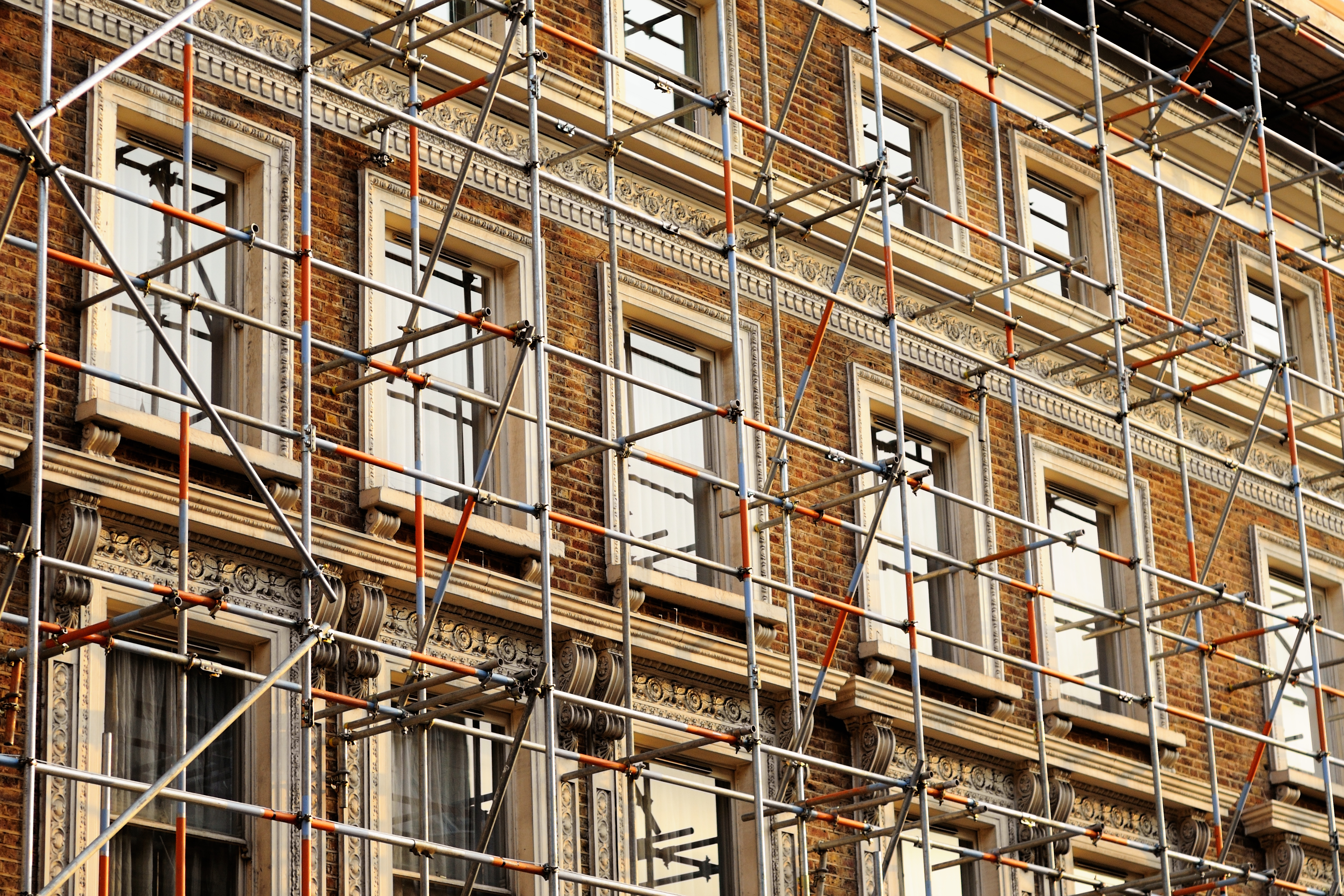


 The update process to the Virginia Uniform Statewide Building Code (USBC) has begun*. This is a two year process, which will wrap up at the end of 2020. The Board of Housing and Community Development will hold a public hearing on July 22, 2019 and we encourage our members to attend in support of improvements to the energy code section of the USBC.
The update process to the Virginia Uniform Statewide Building Code (USBC) has begun*. This is a two year process, which will wrap up at the end of 2020. The Board of Housing and Community Development will hold a public hearing on July 22, 2019 and we encourage our members to attend in support of improvements to the energy code section of the USBC.

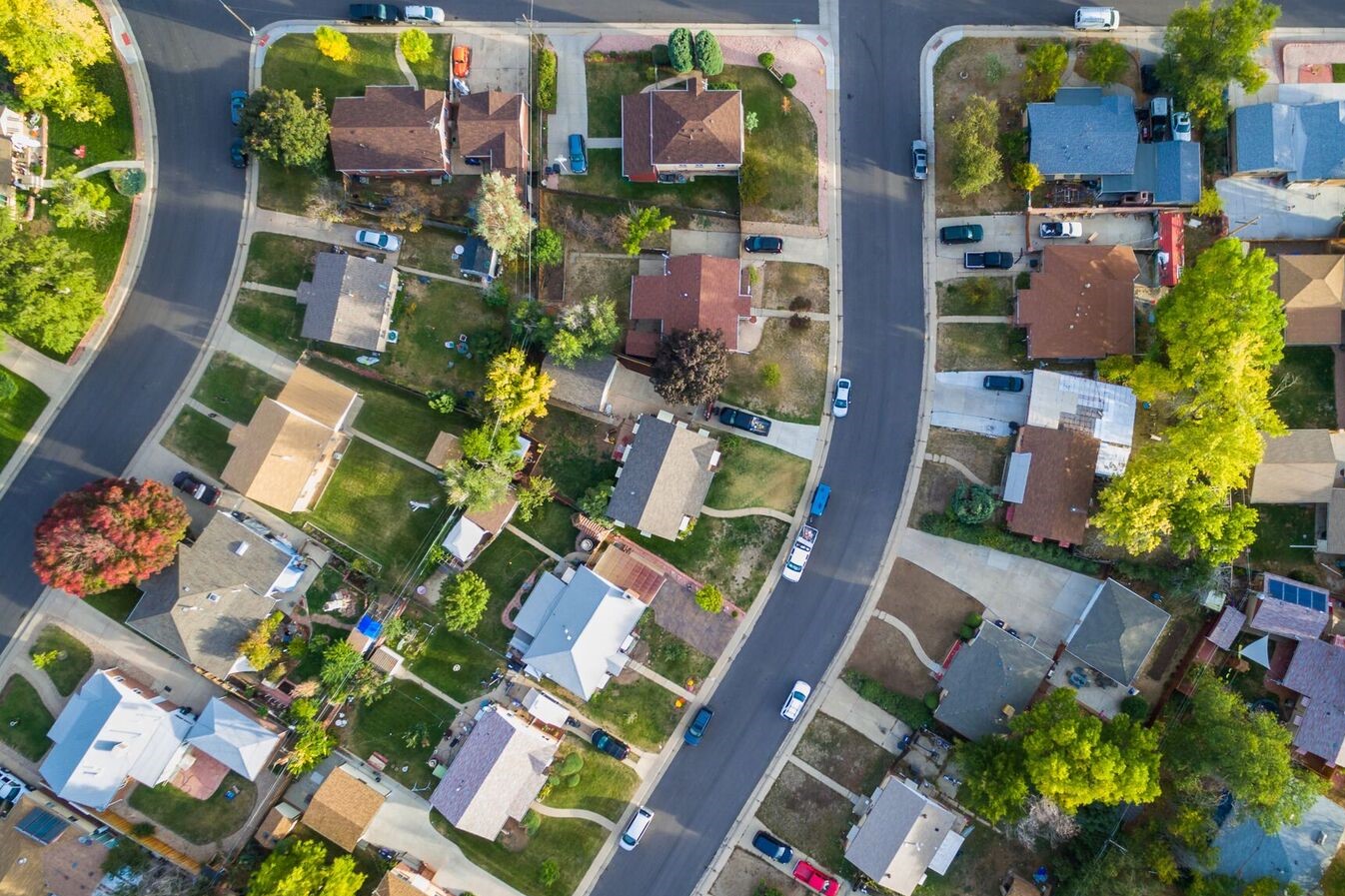
 A second component of the energy subgroup compromise proposal, includes adoption of the 2018 model code Energy Rating Index (ERI) compliance option rather than the 2015 version. This newer version gives homebuilders greater flexibility and trade-off options, which is important since homebuilders in states that have already adopted the 2015 model code, have been slow to use this pathway. By implementing the 2018 version, Virginia is making the ERI pathway more enticing, which will hopefully result in greater participation.
A second component of the energy subgroup compromise proposal, includes adoption of the 2018 model code Energy Rating Index (ERI) compliance option rather than the 2015 version. This newer version gives homebuilders greater flexibility and trade-off options, which is important since homebuilders in states that have already adopted the 2015 model code, have been slow to use this pathway. By implementing the 2018 version, Virginia is making the ERI pathway more enticing, which will hopefully result in greater participation. VAEEC partnered with one of our members, Responsible Energy Codes Alliance, to submit a proposal to DHCD staff to host a stakeholder group to review these issues next year, in the hopes that a compromise can be reached on inclusion of this crucial energy efficiency practice in the next USBC update. Last month, we were pleased to see the full DHCD board unanimously vote to support these efforts.
VAEEC partnered with one of our members, Responsible Energy Codes Alliance, to submit a proposal to DHCD staff to host a stakeholder group to review these issues next year, in the hopes that a compromise can be reached on inclusion of this crucial energy efficiency practice in the next USBC update. Last month, we were pleased to see the full DHCD board unanimously vote to support these efforts. On January 10, 2017, VAEEC and LEAP
On January 10, 2017, VAEEC and LEAP